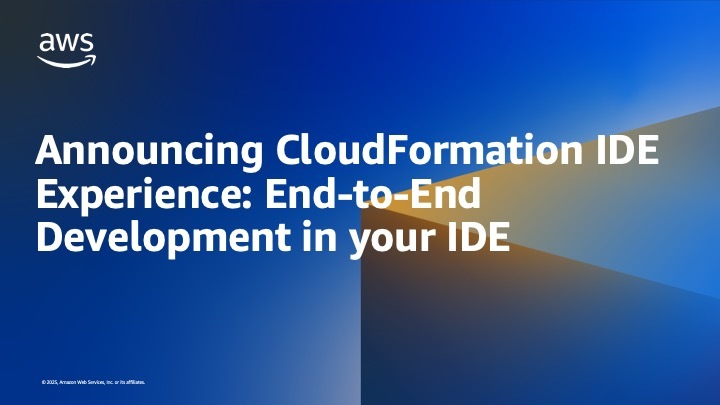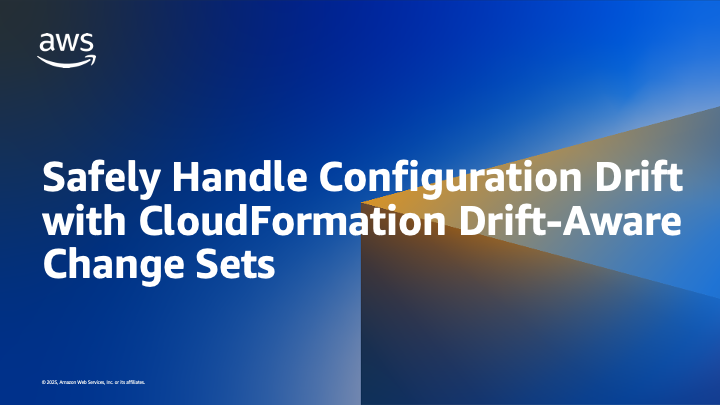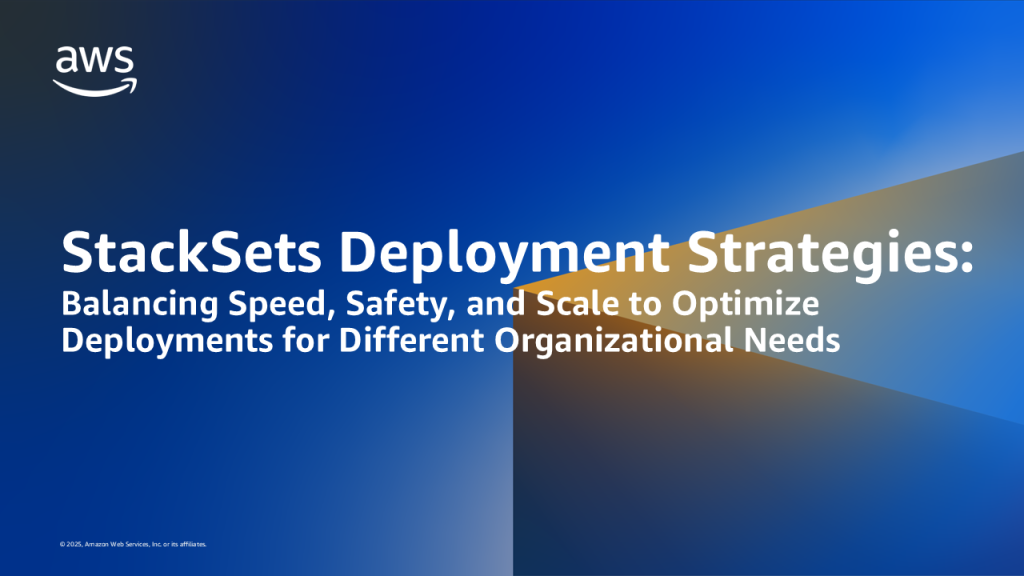AWS DevOps & Developer Productivity Blog
Category: Best Practices
Building with AI-DLC using Amazon Q Developer
The AI-Driven Development Life Cycle (AI-DLC) methodology marks a significant change in software development by strategically assigning routine tasks to AI while maintaining human oversight for critical decisions. Amazon Q Developer, a generative AI coding assistant, supports the entire software development lifecycle and offers the Project Rules feature, allowing users to tailor their development practices […]
Announcing CloudFormation IDE Experience: End-to-End Development in Your IDE
If you’ve developed AWS CloudFormation templates, you know the drill; write YAML (YAML Ain’t Markup Language) in your IDE (Integrated Development Environment), switch to the AWS Management Console to validate, jump to documentation to verify property names. Then run CFN Lint (CloudFormation Linter) in your terminal, deploy and wait, then troubleshoot failures back in the […]
Safely Handle Configuration Drift with CloudFormation Drift-Aware Change Sets
Introduction Is configuration drift preventing you from accessing the speed, safety, and governance benefits of AWS CloudFormation for infrastructure management? Configuration drift occurs when cloud resources are modified outside of CloudFormation, leading to a mismatch in the actual state and template definition of resources. Drift tends to accumulate from infrastructure changes that engineers make via […]
Streamlining Multi-Account Infrastructure with AWS CloudFormation StackSets and AWS CDK
Introduction Organizations operating at scale on AWS often need to manage resources across multiple accounts and regions. Whether it’s deploying security controls, compliance configurations, or shared services, maintaining consistency can be challenging. AWS CloudFormation StackSets (StackSets) has been helping organizations deploy resources across multiple accounts and regions since its launch. While the service is powerful […]
StackSets Deployment Strategies: Balancing Speed, Safety, and Scale to Optimize Deployments for Different Organizational Needs
AWS CloudFormation StackSets enables organizations to deploy infrastructure consistently across multiple AWS accounts and regions. However, success depends on choosing the right deployment strategy that balances three critical factors: deployment speed, operational safety, and organizational scale. This guide explores proven StackSets deployment strategies specifically designed for multi-account infrastructure management. Understanding StackSets Deployment Fundamentals What are […]
Mastering Amazon Q Developer Part 1: Crafting Effective Prompts
As organizations increasingly adopt AI-powered tools to enhance developer productivity, your ability to effectively communicate with these assistants becomes a valuable skill. This guide explores how you can craft prompts that deliver accurate, useful results when working with Amazon Q Developer. Your success with Amazon Q Developer depends directly on how well you communicate with […]
Simplifying Code Documentation with Amazon Q Developer
In the fast-paced world of software development, maintaining comprehensive documentation often falls to the bottom of priority lists in favor of delivering functionality. Amazon Q Developer’s /doc agent changes this equation by automating README generation and updates. With this tool, the variable of time spent producing documentation is reduced to the point that it’s no longer […]
Adopting Amazon Q Developer in Enterprise Environments
Increasing developer productivity has been a persistent challenge for senior leaders over the past decades. With the rise of generative artificial intelligence (AI), a new wave of innovation is transforming how software teams work. Generative AI tools like Amazon Q Developer are emerging as game-changers, supporting developers across the entire software development lifecycle. But how […]
Best practices for rapidly deploying Landing Zone Accelerator on AWS
Landing Zone Accelerator on AWS (LZA) enables customers to deploy a flexible, configuration-driven solution to establish a landing zone while also leveraging AWS Control Tower. At AWS Professional Services, we’ve helped customers deploy and configure LZA hundreds of times. A common request we encounter is integrating LZA configuration into customers’ existing GitOps workflows. GitOps has […]
AWS CloudFormation: 2024 Year in Review
AWS CloudFormation: 2024 Year in Review AWS CloudFormation enables you to model and provision your cloud application infrastructure as code-base templates. Whether you prefer writing templates directly in JSON or YAML, or using programming languages like Python, Java, and TypeScript with the AWS Cloud Development Kit (CDK), CloudFormation and CDK provide the flexibility you need. […]









